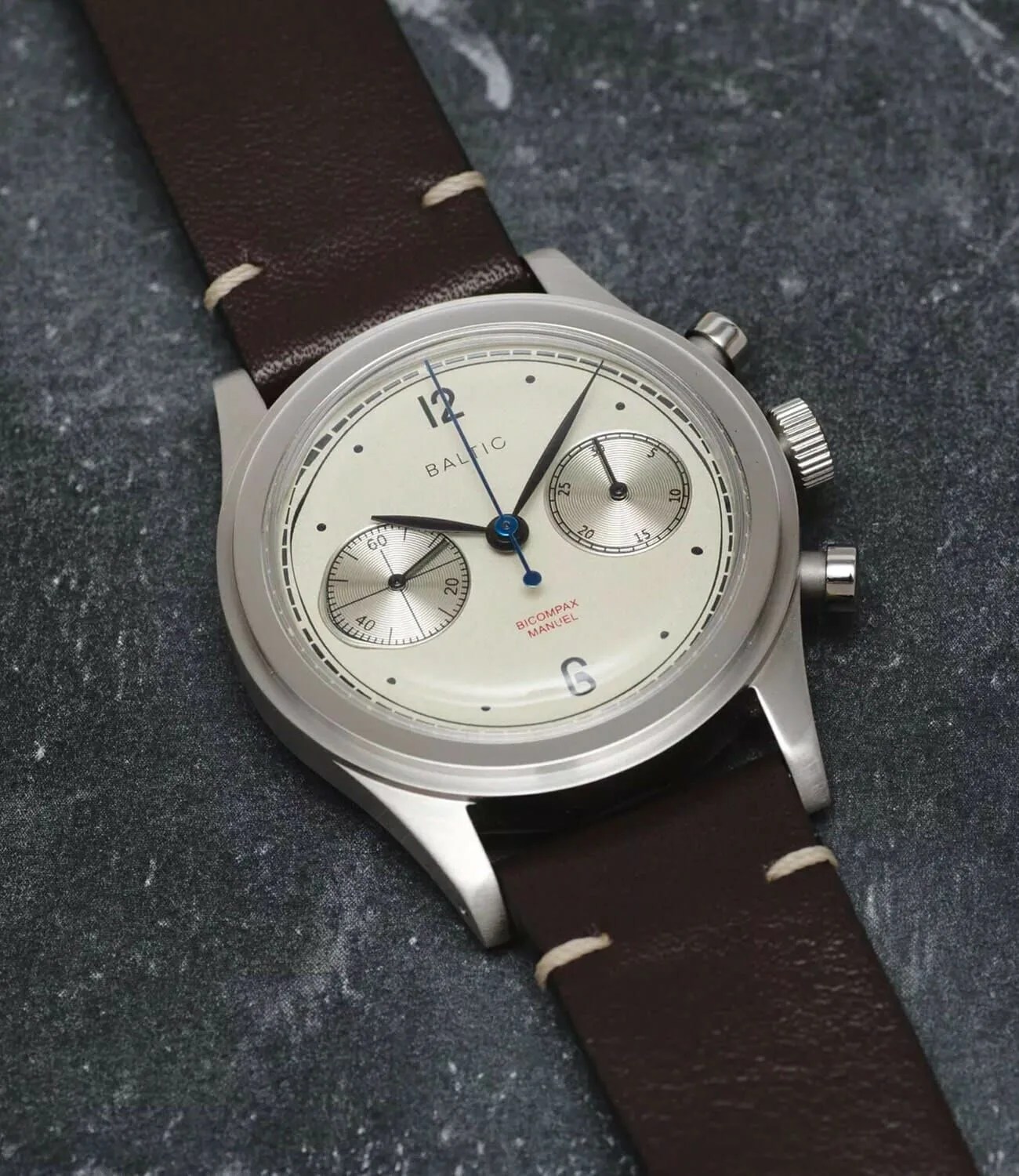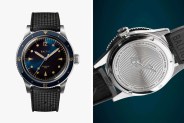Welcome to Watches You Should Know, a biweekly column highlighting little-known watches with interesting backstories and unexpected influence. This week: the Baltic Bicompax.
A cursory survey of the modern watch space will yield a clear realization: heritage and reissues have become en vogue. For the average watch enthusiast, this is generally good news — today, you can purchase modern interpretations of the most iconic watches in history at a fraction of the cost. These heritage models are also equipped with contemporary technologies that offer greater wearability than can be had in the vintage counterparts. The idea of vintage-inspired watchmaking, however, can be a trap, and it’s one that has ensnared a huge contingent of the modern watch manufactures in the last half-decade. While some have navigated the treacherous space with success, others have become mired in it
Baltic has created a simple, aesthetically pleasing wristwatch that feels neither vintage nor modern. In truth, it has accomplished what many a Swiss manufacturer has failed to. But Baltic’s success lies not in decades of watch manufacturing experience, but in its youth. By not being burdened by legacy or an archive of beloved iconic models, the Fench firm has found the freedom to distill the full panoply of the last 100 years of watchmaking into a kind of horological secret sauce that it’s applied to its contemporary designs with care and restraint.
More Watches You Should Know
• Porsche Design Chronograph 1
• Angelus Chronodato
• Benrus Sky Chief
At its most fundamental, a wristwatch must perform two functions well outside of simply keeping time; it must be comfortable enough to wear for long periods of time and be robust enough to withstand the abuse of said wear. Above this basis, a watch should be no more complicated than it has to be. In other words, the addition of complications such as date, chronograph, moon phase and others should be done with purpose. Baltic subscribes to this ‘less is more’ approach and wielded it expertly in its first foray into watchmaking, the HMS 001, which debuted in the spring of 2017.
The HMS 001, an elegantly simple time-only watch driven by the workhorse Miyota 821A automatic movement, draws inspiration from the time-only wristwatches of the 1940s, particularly evident in its 38mm stepped case design. The watch is sleek and simple and at €399 (approximately $450) boasts an incredible bang-for-buck ratio.
For its second model, which also debuted in 2017, Baltic opted to produce a chronograph.


